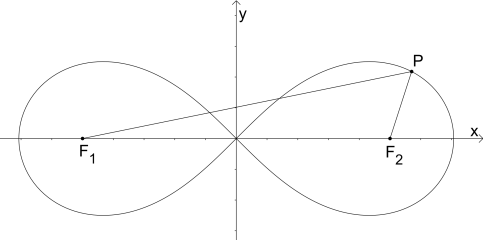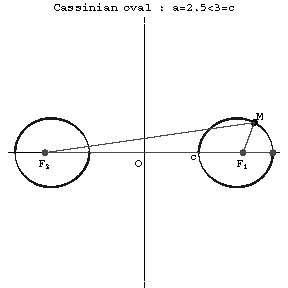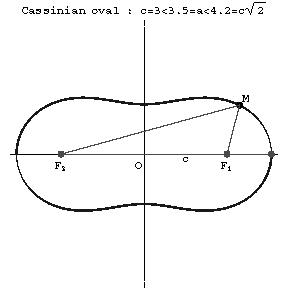Aleksej Ivanovič Markuševič’s book, “Remarkable Curves” discusses the properties of ellipses, parabolas, hyperbolas, lemniscates, cycloids, brachistochrone, spirals and catenaries. Among these “lemniscates” are the ones that I encountered only once before starting undergraduate education (all other curves appeared frequently in physics textbooks) and that too just to calculate the area enclosed by this curve. So I will discuss the properties of lemniscates in this post.
Let’s begin with the well-known curve, ellipse. An ellipse is the locus of points whose sum of distances from two fixed points (called foci) is constant. My favourite fact about ellipses is that we can’t find a general formula for the perimeter of an ellipse, and this little fact leads to the magical world of elliptic integrals. This, in turn, leads to the mysterious elliptic functions, which were discovered as inverse functions of elliptic integrals. Further, these functions are needed in the parameterization of certain curves, now called elliptic curves. For more details about this story, read the paper by Adrian Rice and Ezra Brown, “Why Ellipses are not Elliptic curves“.
Lemniscate is defined as the locus of points whose product of distances from two fixed points and
(called foci) is constant. Lemniscate means, “with hanging ribbons” in Latin. If the length of the segment
is
then for the midpoint of this line segment will lie on the curve if the product constant is
. In this case we get a figure-eight lying on its side.

Lemniscate of Bernoulli; By Kmhkmh (Own work) [CC BY 4.0], via Wikimedia Commons
If we equate the value of the constant product not to but to another value, the lemniscate will change its shape. When the constant is less than
, the lemniscate consists of two ovals, one of which contains inside it the point
, and the other the point
.

Cassini oval (x^2+y^2)^2−2c^2(x^2−y^2)=a^4−c^4; Source: https://www.encyclopediaofmath.org/legacyimages/common_img/c020700b.gif
When the product constant is greater than but less than
, the lemniscate has the form of a biscuit. If the constant is close to
, the “waist” of the biscuit is very narrow and the shape of the curve is very close to the figure-eight shape.

Cassini oval (x^2+y^2)^2−2c^2(x^2−y^2)=a^4−c^4; Source: https://www.encyclopediaofmath.org/legacyimages/common_img/c020700b.gif
If the constant differs little from , the waist is hardly noticeable, and if the constant is equal or greater than
the waist disappears completely, and the lemniscate takes the form of an oval.

Cassini oval (x^2+y^2)^2−2c^2(x^2−y^2)=a^4−c^4; Source: https://www.encyclopediaofmath.org/legacyimages/common_img/c020700a.gif
We can further generalize this whole argument to get lemniscate with an arbitrary number of foci, called polynomial lemniscate.
beautiful series of articles on geometry….thanks I am learning…and I feel happy about it…
LikeLiked by 1 person